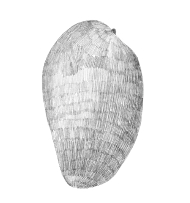Mango

- Mangoes first appeared in India over 5,000 years ago.
- Although unripe mango does not have a very pleasant taste, it is a valuable source of pectin. It also contains oxalic, grape and citric acids. At the same time, their content in ripe mango fruits is negligible.
- Since ancient times, the mango tree in India is considered sacred, and people believe that it can fulfill wishes. It is said that if you hang a fresh mango fruit on your front door during the New Year, then happiness and blessings are sure to come to your home (see interesting facts about India).
- In Thailand and the Philippines, stiff and unripe green mangoes are often added to various salads as a vegetable.
- The mango tree can reach a height of 45 meters. The young leaves on the tree will have a reddish color, while the mature leaves will be dark green.
- Mango is a low calorie fruit. Therefore, it can be consumed by those who adhere to the diet. However, it is important to take into account that it is recommended to eat the fruit only in the first half of the day.
- From mango seeds, oil is prepared, which has an antiseptic effect. It is used to treat skin diseases, relieve itching from insect bites, and get rid of muscle pain.
- Around 300 or 400 A.D., the seeds spread from Asia to the Middle East, East Africa, and South America thanks to traveling humans.
- Mangoes are related to cashews and pistachios.
- Their trees can grow up to 100 feet with a canopy of over 35 feet.
- Trees can still bear fruit after 300 years.
- Less than 1% of the flowers will mature.
- It takes about 4 to 6 years for a tree to bear fruit.
- It takes about 4 months for the fruit to mature and each one is harvested by hand.
- Mango leaves are toxic for cattle feed. Burning their leaves, wood, or debris is also toxic.
- There are over 500 varieties throughout the world. The most popular varieties sold in the United States are Tommy Atkins, Haden, Kent, Keitt, Ataulfo, and Francis.